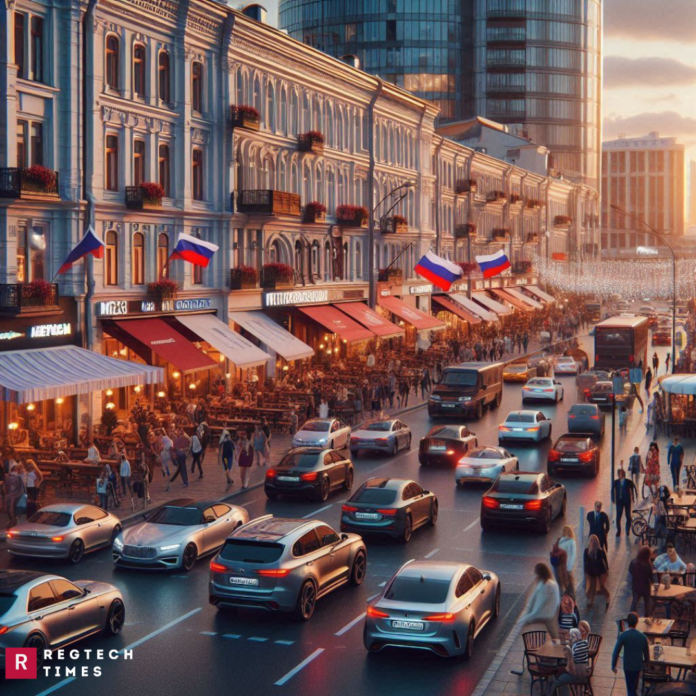Russia is sometimes viewed as a mystery, a nation whose riddle is hard for the outside world to comprehend. This perception goes back to the famous statement by Winston Churchill. Today, the question arises whether the world, especially countries like India, truly grasps what is happening in Russia after the war in Ukraine began on February 24, 2022. A recent visit to Moscow sheds light on life in the Russian capital during these times, revealing a very different picture from what many might expect.
No Shadows of War, No Sign of Sanctions in Moscow
Upon landing at Moscow’s Sheremetyevo Airport, the impact of Western sanctions seems clear. Flights from the West are absent, and the once-bustling airport feels quieter than before. Only Turkey continues its flights, while others have stopped. An English-speaking taxi driver shares how business has been hit hard by sanctions, especially with fewer foreign visitors. Tourists unfamiliar with local rates often pay more than they should. An example of this would be a Chinese colleague who paid 5000 roubles for a cab fare that should have cost about 2300 rouble.
Despite the visible effects of sanctions at the airport, Moscow itself tells a different story. Hotels are bustling with guests, and breakfast halls are full. There’s no sign of the gloom that one might expect from a country at war. In fact, the breakfast spreads are lavish, with a wide variety of food options that could easily compete with any top hotel in the world.
As you walk through Moscow’s supermarkets, the abundance is striking. Grains, fruits, vegetables, and even Western goodies like chocolates and liquor are readily available. Restaurants remain crowded, and finding a seat requires patience, especially on weekends. Business hours stretch well into the night, with crowds spilling out of bars and restaurants even in the early morning hours. There’s a sense of normalcy, and public spaces feel safe, with no fear of crime, even late at night.
Chinese Automobiles and Revived Businesses
The sight of cars on Moscow’s roads presents another intriguing aspect of Russia’s current situation. Unlike the Soviet era, when the Lada and Volga dominated, today’s Moscow boasts cars from all over the world. European and East Asian brands are particularly popular, although these are mostly Chinese-made now. When Western carmakers exited Russia due to sanctions, Chinese manufacturers seized the opportunity. They took over production plants and quickly began rolling out vehicles, filling the gap left by European brands. Now, about 90% of cars on Russian roads are Chinese-made, including upgraded versions of the Lada, a well-known brand that still caters to rural Russia.
The sanctions that were meant to cripple Russia’s economy seem to have done the opposite in many ways. Businesses that the West abandoned have been revived, often under new names. Famous brands like Starbucks, KFC, and McDonald’s continue to operate, albeit with slight changes in branding and larger menus. These revamped businesses provide jobs and opportunities, helping the Russian economy stay afloat.
Many other sectors have followed suit, with revived businesses producing fashion, electronics, appliances, and more. Some believe that sanctions may have been the catalyst for Russia to unleash its economic potential. While the West’s departure left a void, Russia, with significant help from countries like China, filled it quickly and efficiently. Meanwhile, goods like iPhones and other American products continue to flow into Russia, though the origins of these supplies remain a mystery, likely passing through Dubai or Ankara. The supply chain’s continued integrity is the one thing that is certain.
Education and Vodka: Two Pillars of Russian Culture
Russia has long prided itself on its education system, and one of its most respected institutions is Moscow State University (MSU), which offers free courses to students. This socialist tradition survives, ensuring that excellence in education is accessible to all. MSU is renowned for its high standards, and despite its free education, it maintains a reputation as one of the most elite universities. Other universities, like the Patrice Lumumba People’s Friendship University, charge fees but still attract students from all over the world, particularly from Africa and Latin America.
Another cultural cornerstone of Russia is vodka. In Russia, vodka isn’t just a drink; it’s a part of life. It’s enjoyed by people from all walks of life, from the working class to intellectuals. Popular brands like Stolichnaya and Beluga remain favorites, although new brands, such as Onegin, have also gained popularity. Vodka’s widespread consumption, crossing social and economic boundaries, makes it an iconic symbol of Russian culture.
In the face of sanctions and geopolitical challenges, life in Russia, particularly in Moscow, goes on. The economy adapts, businesses thrive, and everyday life shows few signs of the disruptions one might expect. From the bustling restaurants and supermarkets to the cars speeding down the roads, it’s clear that Russia, even under pressure, continues to chart its own path forward.


